As Jerod and I were exploring two of the new civilizations in the latest expansion to Tapestry this week, I kept asking myself the same two questions, over and over. What do gamers want in an expansion? And what do they need in an expansion?
By the end of tonight’s play, I was pretty sure I had the answers to both, at least as to my own experience. I am talking, of course, about Fantasies & Futures, an easy-to-add new expansion for Tapestry, one of Stonemaier Games’ best, if not the most divisive, games. In our game group here in Acadiana, the base game of Tapestry has long been a favorite of many of us, and we’ve been in on every expansion and upgrade that comes out.
I’ve always felt that Tapestry is one of those rare ninety minute euros that delivers exactly what it is billed — a game that allows you to build out a civilization in your own way, using the four (or five) tracks at hand to modify and strengthen the civ along the way. The game board alone tells you what you will be doing for most of the game.
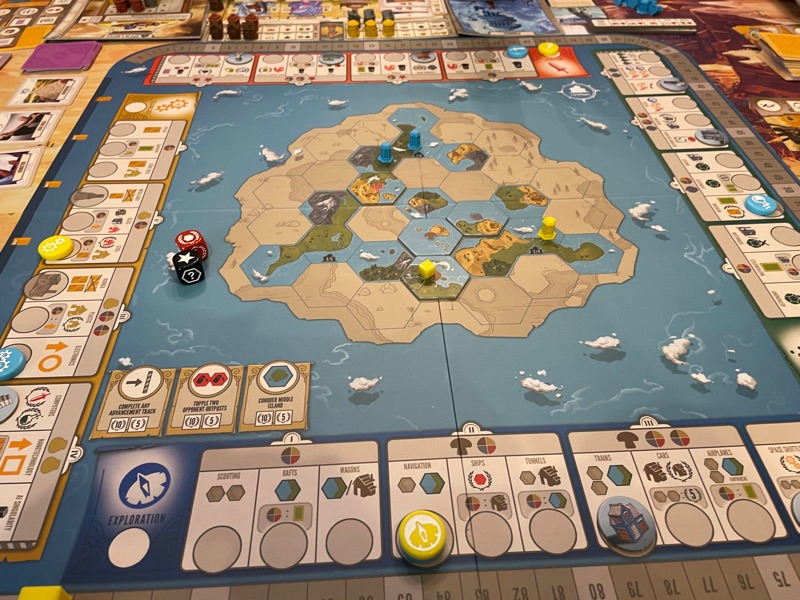
But the topic at hand is the release of what may be its final expansion. Marketing emails dub it “the final expansion” and the last Stonemaier newsletter I have shows no expansions in the works. This is it. Done-do. So what does it bring to the table? Let’s start first with a quick reset.
The premise behind Tapestry is that we are civilizations competing to advance on a planet and garner the most “storied history”. I’m not the first to joke that Tapestry is “track the track game”, and a defining feature, one pointed out in every rule book, is that players will earn progressively better benefits for their civilization by moving pawns up the various tracks in the game.
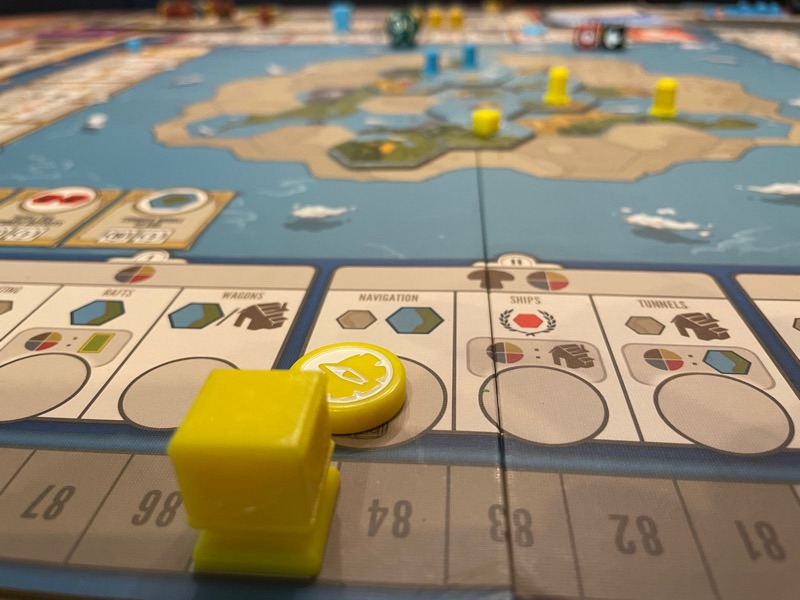
The Fantasies & Futures expansion is designed by Chris Scaffidi and Mike Young, with art by Andrew Bosley. The first thing I noticed when I opened up the eco-friendly packaging (essentially a mailer with a large full color sticker depicting the expansion cover) is that it was packed full, just chock full of stuff.
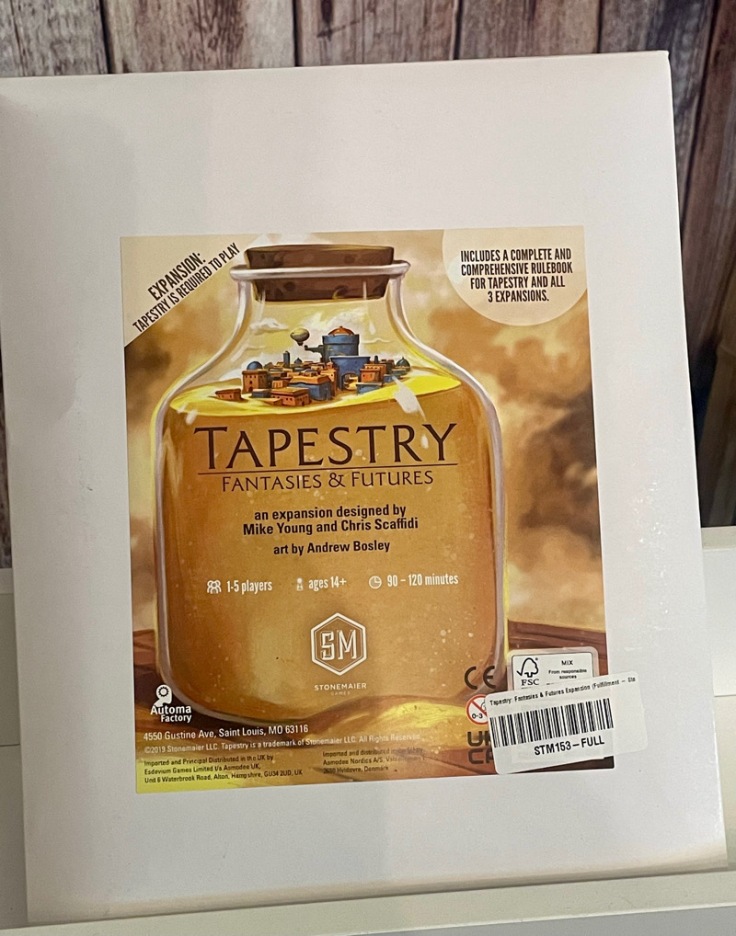
There is a ton of content in such a small package, and it started with a pleasant surprise. Fantasies & Futures comes with two new rulebooks: a complete Automa rulebook for solo play, and even more importantly for my purposes, a comprehensive rule book covering all of the content ever made for Tapestry to date, with all of the revisions and civilization tweaks currently in play. Plus, there’s even an extra sheet showing the rules for a two player variant called the Shadow Empire. The rulebooks are full color and have tons of photos for referencing the different cards and abilities in the game. It even comes with a couple of very handy dandy separate references for the civs and landmarks.
Fans of the miniatures representing the landmarks that you can add to your city mat in the game may be disappointed to learn that there are no buildings in this flat package. But, that’s not really what this expansion is about. Instead, the designers promise a deep dive into “fantasy and sci-fi inspired civs, technology, tapestries, and cities.”
And that’s probably my favorite part of this expansion. Some of my favorite tropes from sci-fi and fantasy novels abound in the civilizations that come with the package. Genies, merfolk and werewolves are here from the fantasy side. Civs that use the brain to its fullest (Psionics) and civs that invent ways to alter the future (Artificers) are here. There’s even an appearance by the ever-present but never seen Illuminati.
All total, the expansion includes ten new civilizations to try, bringing the total number of civilizations to over thirty different to play. I hesitate to spoil some of the wacky new abilities on the civs, because part of the fun of Tapestry is discovering how they work during the play. Suffice it to say that they run the gamut from different ways to fill up your city mats, to player interactions, and even some that have pretty powerful income turns on the last turn of the game, if players have set up the income structure correctly. In fact, word of advice here — make sure you understand exactly what your civ does in turn 5 if you want to max out some of those sweet bonus points.

We get some new city maps, too. Six new maps (Polar, Netherworld, Quagmire, Savanna, Veil, and City in a Bottle) represent some varied twists on the city set ups. I don’t recommend these for brand new players to Tapestry, though. Some of them are pretty complicated. When I looked at Polar for the first time, with its dots intersected by criss-crossing diagonal lines all over the map, I had to do a double take and re-read the instructions on the card a few times.
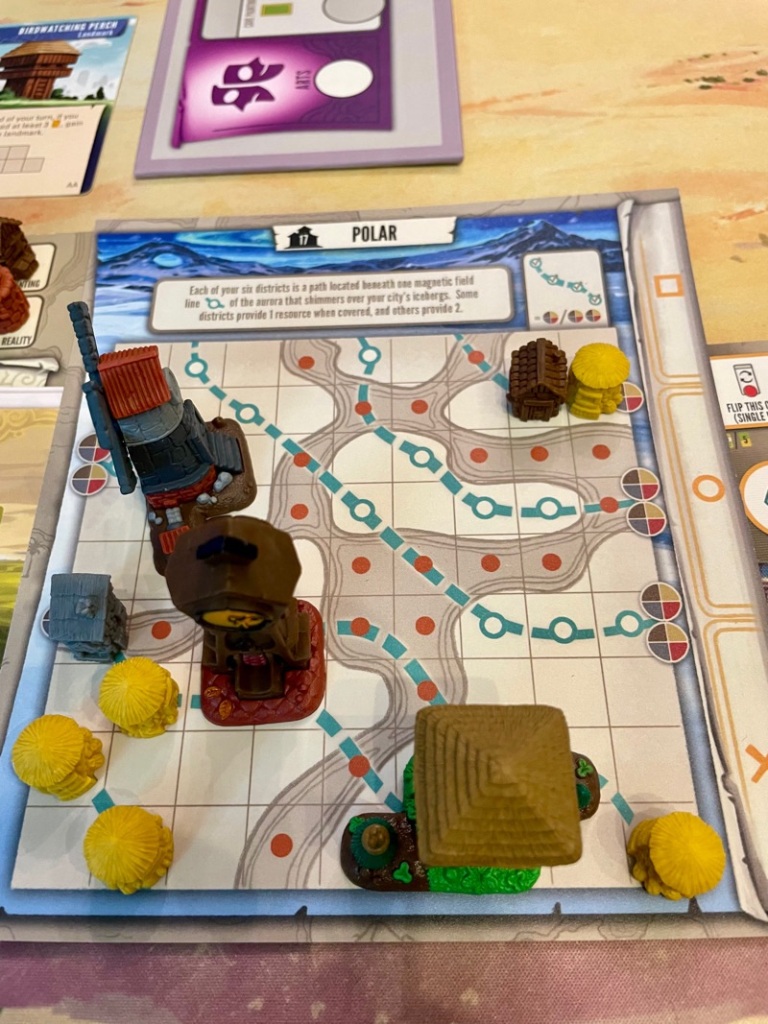
I have actually played Polar as a city, and it’s an interesting map, where the ‘districts’ aren’t represented by boundaries like the previous maps. Instead, the map has “magnetic field lines” that go from left to right. Placing buildings that cover every available space represented by the line gets you one or two resources, but it’s more linear and flowing rather than geometrically shaped like in other maps.
City in a Bottle is another one that intrigued me right from the start. First, it’s small, only six-by-six in grid size. But it’s larger than you think, because you cannot place landmarks on this map. Instead, you “set aside” any landmarks you earn, and gain a hefty six points every time you do it. So, filling up the districts is going to be a challenge, one at a time with the small buildings on your civ mat. Jerod played City in a Bottle, and he was a little underwhelmed, but it’s one I’d like to try.
Now it just wouldn’t be a Tapestry expansion without some more cards, of course. The package comes with nearly forty new Tapestry cards. I like the humor that is present in the new cards. You’ll find everything from Doppelgängers to Zombies in this set. Again, the theme of sci-fi and fantasy is well represented in these cards. And there’s a little bit of lagniappe in these new cards, called Charm Bonuses.
The conceit of the Charm Bonuses is that this expansion plays with our concept of parallel universes, which explains why ‘weefolk’ and ‘celestials’ might be hanging around the regular civs in the base game. Tapestry cards with charm bonuses have tags on them, either to the left or right of the card (or both) that triggered when played. Playing one of these tapestry cards to the right of an already played card (including the pre-printed Maker of Fire tapestry) will generate the benefit of the tags on the left. Playing a tapestry card for the first time to the right of a tapestry card with a charm bonus triggers any benefits of the tags on the right side of that original card. It’s pretty simple and it adds one more layer to the decision of what order to play the tapestry cards.
One of the joys of the base game is the ability to rev up your civilization using tech cards, and this expansion comes with a dozen new techs (and a replacement for the Oil Paint tech previously issued). Unlike the original tech cards, these superpowered ones require players to pay charmed tapestry cards (cards with charm bonuses) before being allowed to upgrade to the top row of the tech tree. But the bonuses (like getting space tiles or double victory points) are pretty sweet, so those charmed cards will get played.
As I hinted before, all of the new additions add subtleties and complications, ping-ponging off of other abilities, that mean I will probably not throw in the expansion with a new group of players. But, for anyone that has played Tapestry a time or two, the new civilizations, new tech cards, and the gargantuan collection of new tapestry cards make this an easy add to Tapestry when it is played.
For so many of my favorite games, adding more stuff only bloats the game. Fantasies & Futures isn’t about bloat at all; it’s more about adding small twists and thematic settings that enhance the game, especially for those players that want to up the challenge level of the turns.
So back to the original questions that popped in my head while we played. What do gamers want in an expansion? For me, I almost always want more of the good stuff that I like in the game. In Tapestry, that means more civs and cities, more techs, and more tapestry cards. Fantasies & Futures delivers in that regard.
But the tougher question is what do gamers need in an expansion. Do we need wholesale changes to the gameplay? Not me. I’d much rather add something that is small and seamless, something that makes me look at my gaming partners after the game and say, “I see no reason why we shouldn’t play with those additions every game.”
And that, fellow gamers, is the bottom line of Tapestry: Fantasies & Futures. Everything we have explored so far in the expansion is stuff we’d see no reason not to play again in the future. More choices when picking civs and cities? Of course. A bigger Tapestry card deck? No problem. More techs? Yes, please! Getting the additional charm cards mechanics is just lagniappe.
Until next time, laissez les bon temps rouler!
— BJ from Board Game Gumbo
** A complimentary copy of the expansion was provided by the publisher. **

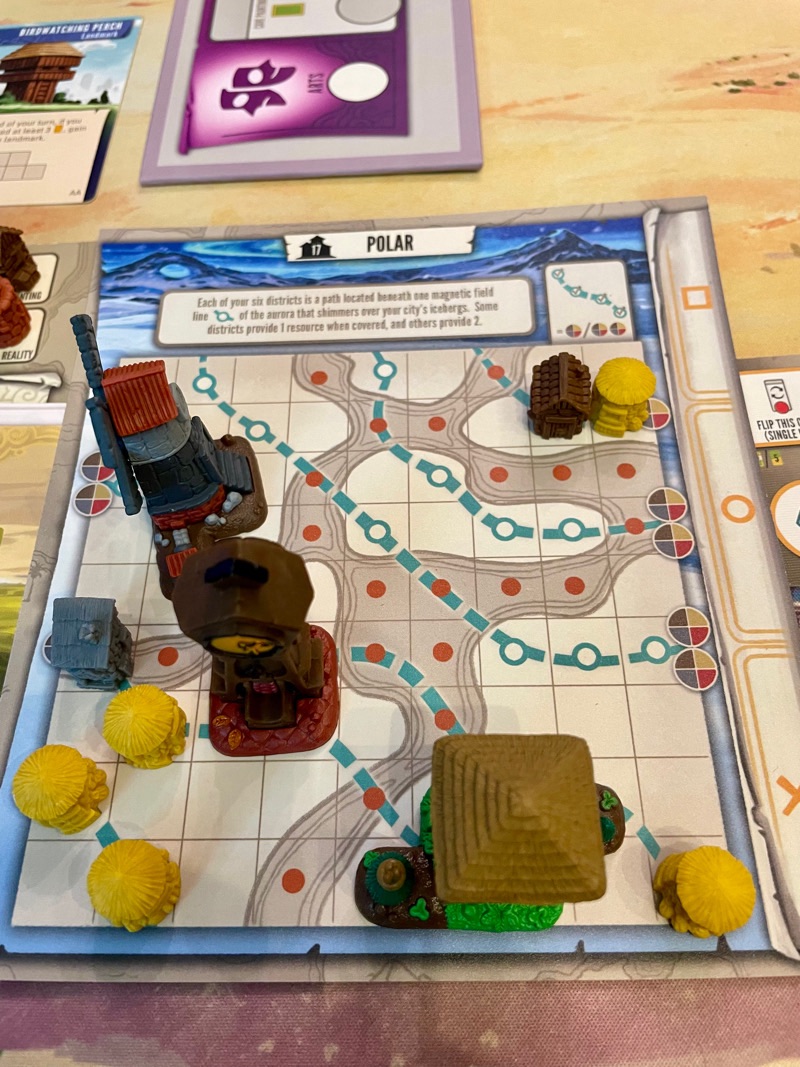
Leave a comment